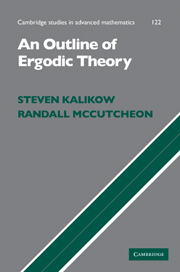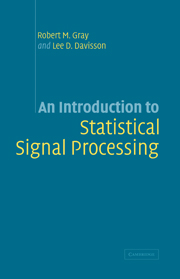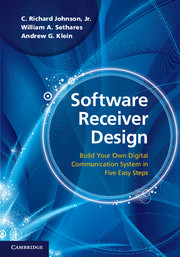Refine search
Actions for selected content:
6791 results in Communications and signal processing
Index
-
- Book:
- Optimal Estimation of Parameters
- Published online:
- 05 July 2012
- Print publication:
- 07 June 2012, pp 161-162
-
- Chapter
- Export citation
2 - Data collection
-
-
- Book:
- Multimodal Signal Processing
- Published online:
- 05 July 2012
- Print publication:
- 07 June 2012, pp 11-27
-
- Chapter
- Export citation
10 - Summarization
-
-
- Book:
- Multimodal Signal Processing
- Published online:
- 05 July 2012
- Print publication:
- 07 June 2012, pp 170-192
-
- Chapter
- Export citation
Appendices
-
- Book:
- Optimal Estimation of Parameters
- Published online:
- 05 July 2012
- Print publication:
- 07 June 2012, pp -
-
- Chapter
- Export citation
9 - Multimodal analysis of small-group conversational dynamics
-
-
- Book:
- Multimodal Signal Processing
- Published online:
- 05 July 2012
- Print publication:
- 07 June 2012, pp 155-169
-
- Chapter
- Export citation
14 - Conclusion and perspectives
-
-
- Book:
- Multimodal Signal Processing
- Published online:
- 05 July 2012
- Print publication:
- 07 June 2012, pp 232-237
-
- Chapter
- Export citation
B - Universal prior for integers
- from Appendices
-
- Book:
- Optimal Estimation of Parameters
- Published online:
- 05 July 2012
- Print publication:
- 07 June 2012, pp 153-155
-
- Chapter
- Export citation
Frontmatter
-
- Book:
- Multimodal Signal Processing
- Published online:
- 05 July 2012
- Print publication:
- 07 June 2012, pp i-iv
-
- Chapter
- Export citation
7 - Hypothesis testing
- from Part II - Estimation
-
- Book:
- Optimal Estimation of Parameters
- Published online:
- 05 July 2012
- Print publication:
- 07 June 2012, pp 83-103
-
- Chapter
- Export citation
References
-
- Book:
- Multimodal Signal Processing
- Published online:
- 05 July 2012
- Print publication:
- 07 June 2012, pp 238-270
-
- Chapter
- Export citation
Part I - Coding and information
-
- Book:
- Optimal Estimation of Parameters
- Published online:
- 05 July 2012
- Print publication:
- 07 June 2012, pp 9-10
-
- Chapter
- Export citation
3 - Microphone arrays and beamforming
-
-
- Book:
- Multimodal Signal Processing
- Published online:
- 05 July 2012
- Print publication:
- 07 June 2012, pp 28-39
-
- Chapter
- Export citation
A - Elements of algorithmic information
- from Appendices
-
- Book:
- Optimal Estimation of Parameters
- Published online:
- 05 July 2012
- Print publication:
- 07 June 2012, pp 144-152
-
- Chapter
- Export citation
6 - Interval estimation
- from Part II - Estimation
-
- Book:
- Optimal Estimation of Parameters
- Published online:
- 05 July 2012
- Print publication:
- 07 June 2012, pp 70-82
-
- Chapter
- Export citation
8 - Denoising
- from Part II - Estimation
-
- Book:
- Optimal Estimation of Parameters
- Published online:
- 05 July 2012
- Print publication:
- 07 June 2012, pp 104-111
-
- Chapter
- Export citation
7 - Video processing and recognition
-
-
- Book:
- Multimodal Signal Processing
- Published online:
- 05 July 2012
- Print publication:
- 07 June 2012, pp 103-124
-
- Chapter
- Export citation
6 - Sampling techniques for audio-visual tracking and head pose estimation
-
-
- Book:
- Multimodal Signal Processing
- Published online:
- 05 July 2012
- Print publication:
- 07 June 2012, pp 84-102
-
- Chapter
- Export citation

An Outline of Ergodic Theory
-
- Published online:
- 05 June 2012
- Print publication:
- 25 March 2010

An Introduction to Statistical Signal Processing
-
- Published online:
- 05 June 2012
- Print publication:
- 02 December 2004

Software Receiver Design
- Build your Own Digital Communication System in Five Easy Steps
-
- Published online:
- 05 June 2012
- Print publication:
- 18 August 2011
